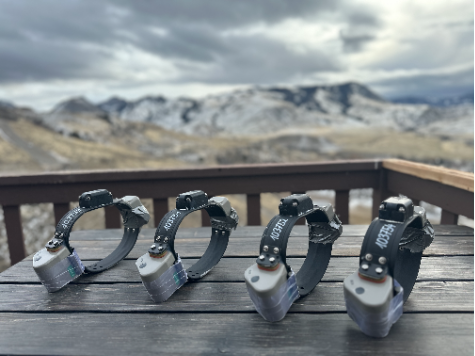Animal movements
Understanding animal behavior - what animals do, where and when - is essential for behavioral ecology, as it governs interactions between species within food webs (including humans), interactions among individuals within a population, interactions between individuals and their physical environment, and ultimately affects animals’ physical condition and population dynamics. However, monitoring animal behavior is challenging. Animals can go unnoticed, certain behaviors only occur at night or are brief… Direct visual observation often provides only limited and biased information. This has driven the search for new tools to remotely observe species behavior. Tools such as motion-triggered camera traps have facilitated the acquisition of new data. But no tool has provided as much new and unexpected information on animal behavior as those grouped under the term "biologging"—which refers to data loggers deployed directly on the animals themselves.
Recently, there has been an explosion of statistical approaches to infer animal behavior remotely using GPS tracking and accelerometer/magnetometer data. However, all these models require independent validation, which can be complex to obtain. Furthermore, neither GPS nor accelerometers provide information about the environment, meaning that current GPS/accelerometer loggers cannot directly capture animals’ responses to environmental stimuli. Video loggers do exist, but they face limitations in terms of energy consumption and storage, and are unusable at night.
The GPS/accelerometer logger and the audio recorder developed as part of TERRA FORMA build upon instrumentation research by CEFE and LIRMM, which led to the design of prototypes. The aim is now to make these loggers connected via LoRa (GSM communication is already functional for GPS), optimize energy consumption/recovery, and reduce their cost. Two main applications are targeted within TERRA FORMA :
tracking animal location and movement/activity
observing animal behavior and responses to environmental stimuli.
Finally, a simple and cost-effective generic tracking platform (e.g., following the opencollar initiative) will be identified or developed and made available, to meet the needs of many practitioners, researchers, and wildlife managers, who are increasingly engaged in animal tracking.
These low-cost, low-power loggers, equipped with remote data transmission, will allow for deployment on numerous animals, over long periods or at high sampling frequency.
Theme : Biodiversity

Updated on 24 juin 2025



